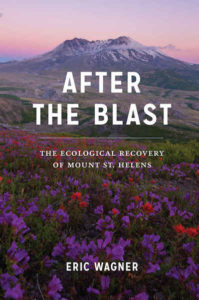 On the morning of 18 May, 1980, I was camping with my Boy Scout troop in Ft. Stevens State Park. We were just finishing up breakfast when the news reached us from one of the rangers that Mt. St. Helens had erupted. None of us would learn the full extent of the damage – including the destruction of Spirit Lake, a heartbreakingly beautiful location at which we had camped the year before – wrought by explosion until days later. Fifty-seven people died from the blast, as well as countless animals and plants. So much of the surrounding landscape was either incinerated or buried by ash that it resembled the surface of the Moon more than any Earthly environment. Like so many of my Pacific Northwest neighbors, I remember wondering if I would live to see the area even begin to return to its former lush, green state.
On the morning of 18 May, 1980, I was camping with my Boy Scout troop in Ft. Stevens State Park. We were just finishing up breakfast when the news reached us from one of the rangers that Mt. St. Helens had erupted. None of us would learn the full extent of the damage – including the destruction of Spirit Lake, a heartbreakingly beautiful location at which we had camped the year before – wrought by explosion until days later. Fifty-seven people died from the blast, as well as countless animals and plants. So much of the surrounding landscape was either incinerated or buried by ash that it resembled the surface of the Moon more than any Earthly environment. Like so many of my Pacific Northwest neighbors, I remember wondering if I would live to see the area even begin to return to its former lush, green state.
However as Dr. Eric Wagner explains in his new book After the Blast; The Ecological Recovery of Mount St. Helens, it did not take a lifetime for life to begin returning to the slopes of the mountain; in fact, in a mere few weeks after the eruption, a helicopter-facilitated reconnaissance trip to the area found that plants and animals were already visible on the ash-covered ground. Life didn’t need to “return” because it had never entirely left.
As one who not only grew up knowing the mountain as both a lush place of natural beauty and recreation, as well as the volcano hat the rest of the world came to know it as following that day in May, and one of the many mountains visible to me each morning as I make my daily walk along the hillside near our Oregon home, I am eagerly anticipating a full reading of Dr. Wagner’s new book. I expect it shall bring back a cascade of memories, and I hope from it I shall also find a number of answers to so many of the questions that formed in my mind that May so long ago – as well as so many more that have occurred to me since then.

